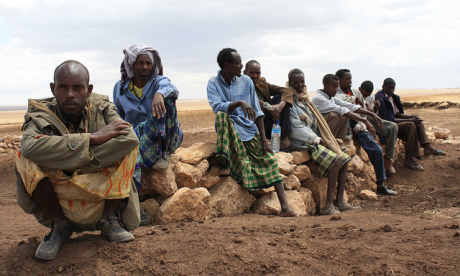
Ethiopia is a misunderstood land with an ancient history and culture – it's definitely not one to miss
"Give me plastic,” he demanded.
It was a change from the usual Ethiopian greeting, which seemed to alternate between “give me pen” and “give me money”. In fact, he was not offering to accept contributions from credit cards – it was a request for our discarded mineral water bottles.
Ethiopia is most definitely not submerging under cast-off plastic bottles, like so much of the rest of the world. They’re all recycled and markets often have a stall dealing exclusively in old plastic bottles and empty tin cans.
This has to be one of the most misunderstood nations on earth, and the forest of open hands that surround most western visitors often means you don’t see the wood for the trees. The knee-jerk Ethiopia-equals-famine image generated by decades of foreign aid has, many Ethiopia observers insist, not only scared away potential visitors, it’s also created the idea that every foreign visitor has arrived simply to distribute largesse.
What’s more, the famine image obscures the fact that Ethiopia has one of the most distinctive cuisines on the continent. To eat Ethiopian-style, take a pancake-like disc of injera, the equivalent of pasta/potato/bread as the staple of Ethiopia. On this, drop a dollop of vegetables, a spoonful of spicy sauce, a serving of salad, a ladle of chopped, grilled meat and so on. Then tear off a chunk of injera and use it to scoop up the various additions. What makes eating Ethiopian-style a thoroughly sociable occasion is that there’s only one circle of injera per table. It’s hard not to be friendly when you’re all eating off the same plate.
Ethiopia’s recent hard times also overshadow the country’s amazing history. Take Aksum, the mysterious northern capital with its gigantic stelae, the largest of which would have towered over any of the Egyptian obelisks – if it hadn’t fallen over and shattered before it was erected. One of the largest was looted by Mussolini in 1937, soon after the disastrous Italian invasion. For nearly 70 years it stood in the Piazza di Porta Capena in Rome but, after years of foot-dragging, was returned to Ethiopia in April, soon after we visited Aksum. It took a long time for the Italians to hand back the stela but the long-awaited return focuses attention, once again, on the British Museum and its stolen goods.
Ethiopia was one of the first Christian countries, with scholarly monks painstakingly producing illustrated manuscripts centuries before quill was dipped in ink for the Book of Kells. The monasteries of Lake Tana and the rock-carved churches of Lalibela are prime attractions for visitors like us, making a circuit of the ‘Historical Route’ around northern Ethiopia.
Monks and priests at these ancient churches are remarkably nonchalant about their ancient wonders, hauling centuries-old manuscripts out of their leather cases and flipping the pages open to show visitors beautiful pictures of St George (Ethiopia’s patron saint) dispatching another slobbering dragon while Brutawit, the dragon-threatened damsel, looks on in wide-eyed wonder.
Despite all this, it’s hard to escape the fact that Ethiopia is still a dirt-poor country. Every stretch of road seemed to be continuously populated by countless Ethiopians striding towards who-knows-where, their threadbare elegance enhanced by umbrellas, which seem to be part of the well-dressed Ethiopian’s walking ensemble.
Our circuit covered about 3,000km, of which less than a third was on asphalt road. The balance of the trip seemed to take part in a dust cloud, which eventually permeate deverything we owned. Tourism in Ethiopia may be steadily increasing but it has still not rebounded to the levels it reached in the early 1970s, at the close of the Haile Selassie era. The easier travel that will come with the many kilometres of new road currently under construction may help those tourist numbers rebound.
Maureen and Tony Wheeler founded Lonely Planet in 1973